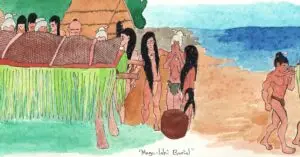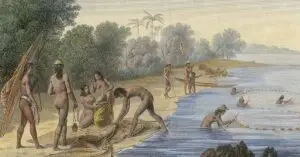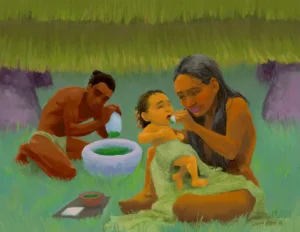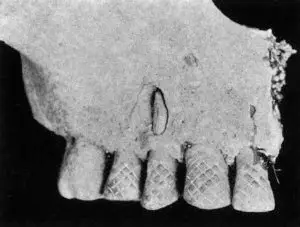
Ancient CHamoru/Chamorro Burial Practices
One of the distinguishing features of our humanity is the way in which people treat and understand death. Death is not only the end of

One of the distinguishing features of our humanity is the way in which people treat and understand death. Death is not only the end of

Two sources of information reveal the fishing practices of the Ancient CHamoru people. The first source is the archeological evidence. This includes the actual remains
Archeologists help us learn about ancient cultures by looking at the objects or materials, known as artifacts, that people left behind. The most abundant artifact
Archeological studies have revealed that during the Latte Period ancient CHamorus retrieved bones from deceased bodies after tissue had deteriorated, and used the bones for

When French explorer Louis Claude de Freycinet visited Guam between March and June of 1819, he observed CHamorus capturing mañåhak or juvenile rabbitfish (Siganus spp.)

There is a dearth of written accounts of ancient CHamoru burial practices, but from the few historic descriptions available, the burial customs and rituals were
In the Mariana Islands, as well as other islands throughout the Pacific, rice is considered one of the most important food staples. Bags of rice
Archeologists learn about societies and cultures of the past by looking at the objects or artifacts that people left behind. Some of the most useful

Health and wellness. Because of the biological nature of our bodies, people get sick, and people die. Illness and death are a part of life.

Tooth staining. Unlike clothing or hairstyles, body modifications are changes made to the body itself that are of a more permanent nature. Among the CHamoru